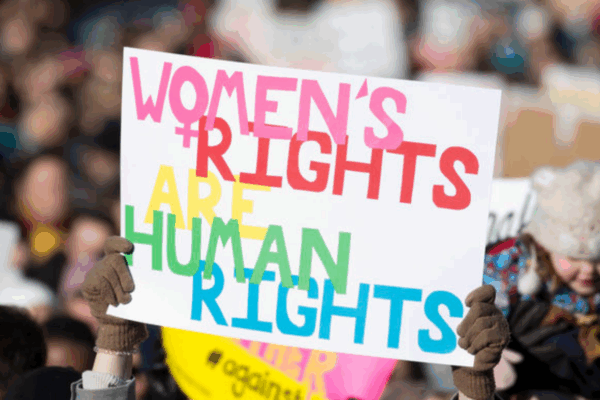In his proclamation establishing Women’s Equality Day in 1973, President Richard Nixon stated: “The struggle for women’s suffrage, however, was only the first step toward full and equal participation of women in our Nation’s life … And yet, much still remains to be done.” Sadly, these words remain true today.
In 1920, the 19th Amendment guaranteeing the right to vote regardless of gender was passed. It was a baby step toward gender equality, especially since it only guaranteed white women the right to vote. In 1973, amid the fight to pass the Equal Rights Amendment, Congress and Nixon declared that Aug. 26 would be known as Women’s Equality Day.
Virginia was way behind in ratifying the 19th Amendment – we didn’t do so until 1952, long after the fight was over. Women continue to face countless forms of discrimination every day: persistent wage gaps, attacks on our rights to access abortion and contraception, discrimination for using basic menstrual products, and many types of employment discrimination. Some protections against gender discrimination have been passed since the 19th Amendment. Federal laws protecting against sex-based discrimination in the workplace and specific protections against pregnancy discrimination exist.
Yet, federal employment laws leave out workers at small employers. Some states have stepped up to offer additional protections. Virginia provides an extremely narrow expansion by providing a cause of action for people terminated from employers with six to14 employees on the basis of sex. Our state law leaves out workers facing ongoing discrimination, who may not be able to afford to leave and seek another job. If you’re facing discrimination at work, we want to hear from you.
When Women’s Equality Day was first established in 1973, we had a lot of work to do toward true gender equity. We still haven’t made enough progress.
We also know that women face different pathways into and out of the criminal justice system than men; yet many reforms and programs focus on men who are incarcerated. For example, women who are incarcerated may find they are not offered access to the same educational and vocational training programs available to men who are incarcerated. Still, the rate at which women are being incarcerated is growing more rapidly than that of men. Reforms targeted at the specific needs of this population are necessary to curb the increasing rate of incarceration of women. You can learn more about gender-specific factors and possible reforms in our report “Women in the Criminal Justice System.”
Women’s Equality Day was first recognized to support ratification of the federal Equal Rights Amendment. This is a battle we still have not won. We do have a hollow state-level victory on this front in Virginia – our constitution contains a ban on discrimination on the basis of sex that the Virginia Supreme Court held goes no further than federal protections. This means that in order to give this clause in our state constitution the weight and import it deserves, we need to either overturn this terrible decision or become the 38th and final state needed to ratify the federal Equal Rights Amendment. Ideally, we should do both.
When Women’s Equality Day was first established in 1973, we had a lot of work to do toward true gender equity. We still haven’t made enough progress.

